PETA Asia Investigation Exposes Extreme Abuse of Goats for Cashmere
PETA Asia went undercover in Mongolia to expose lies about “sustainable” and “responsible” cashmere, and the findings reveal that—no matter what sort of labeling is used—all cashmere comes from goats whose hair was violently stolen from them before they were slaughtered.
Between April 2022 and February 2023, PETA Asia’s investigators visited cashmere operations in Mongolia—including one herding operation with ties to clothing companies such as Naadam, Louis Vuitton, Dior, Prada, Gucci, Hermès, Chanel, Burberry, and Bottega Veneta. Investigators discovered the following:
- Workers pinned goats down by their legs and horns and ripped out their hair—all while the animals screamed in pain and fear.
- A herder used an unsterilized knife to cut open goats’ scrotums and pulled out kids’ testicles with his bare hands and without pain relief.
- Pieces of the animals’ skin were pulled away with the cashmere.
- Goats were left to suffer from bleeding wounds.
- There were multiple dead animals on site, including a goat found dead the day after the animal had been seen sick or injured, limping around a pen, and kids who likely died due to extreme cold or hunger.
Help protect goats from torture and slaughter by urging Naadam, Louis Vuitton, Dior, and other brands to ban cashmere immediately!
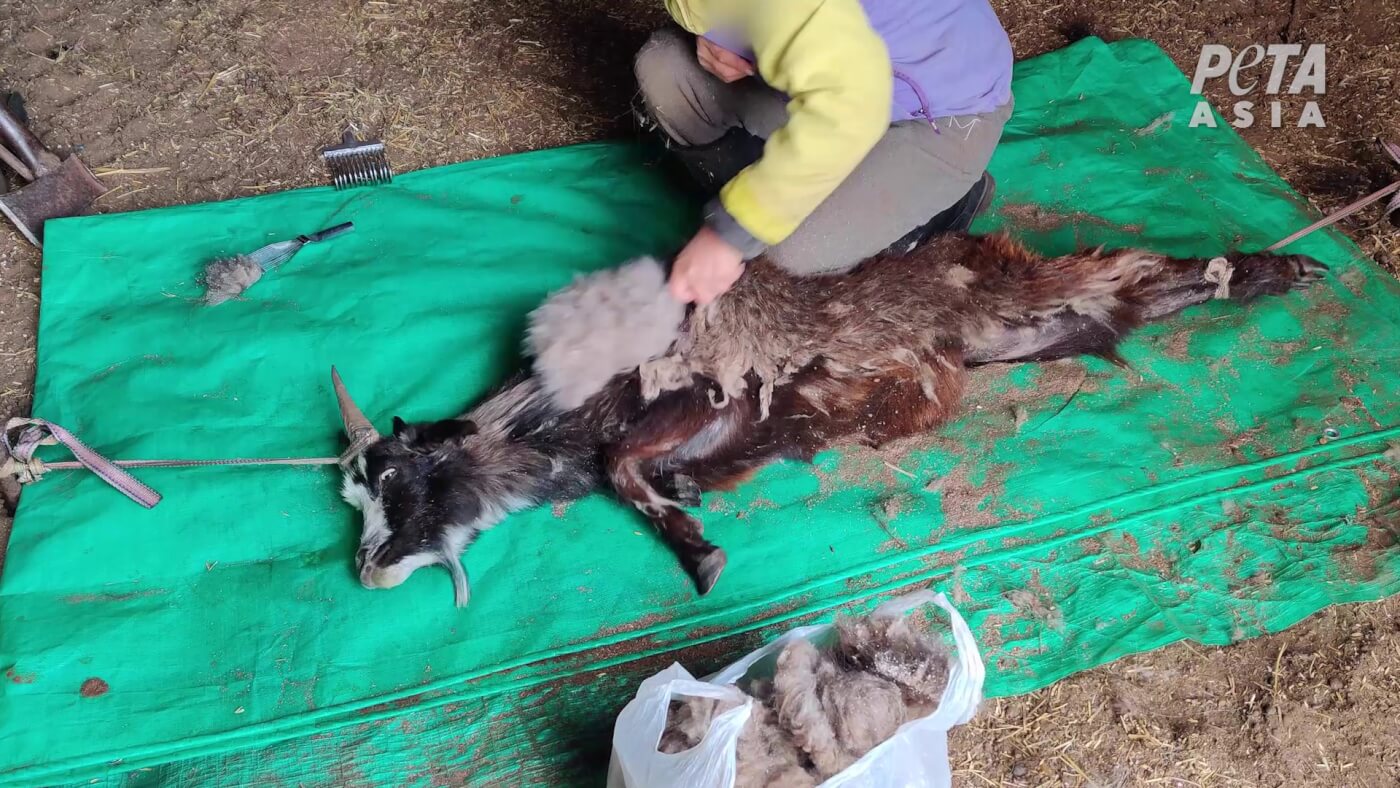
Combing Is a Painful, Prolonged Process
Goats screamed as workers tied them down by their legs and pulled the hair out of their sensitive skin with sharp metal combs—a terrifying process that usually takes an hour per goat. Hand-combing is done only to make money, since cashmere goats would shed their coats naturally.
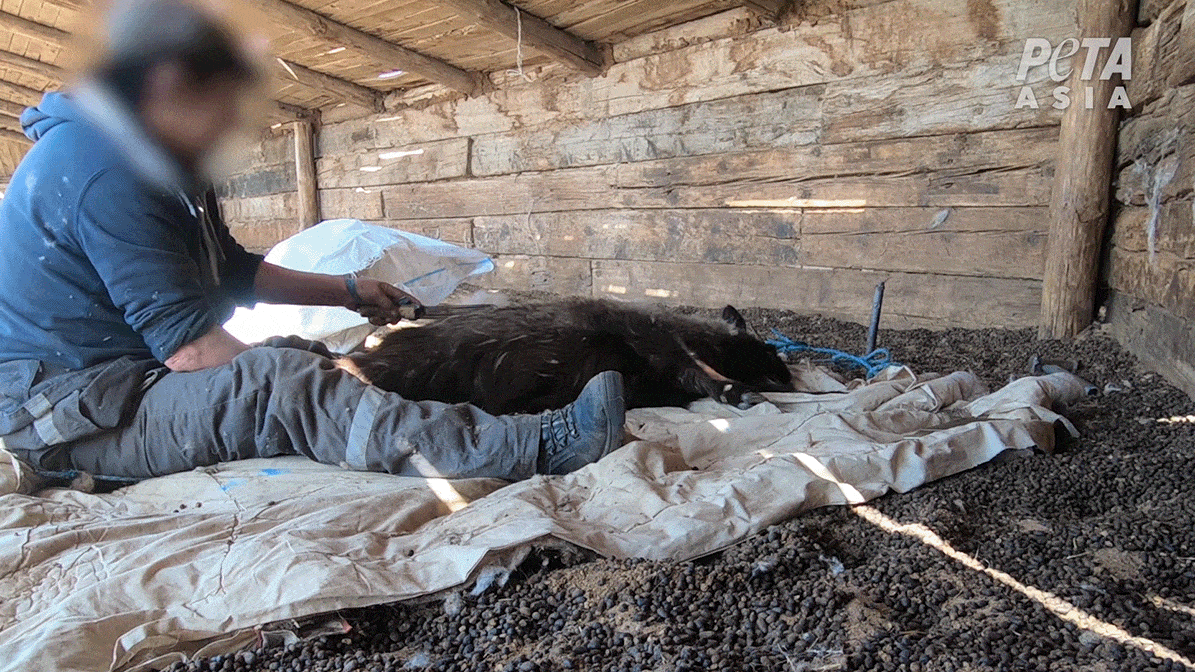
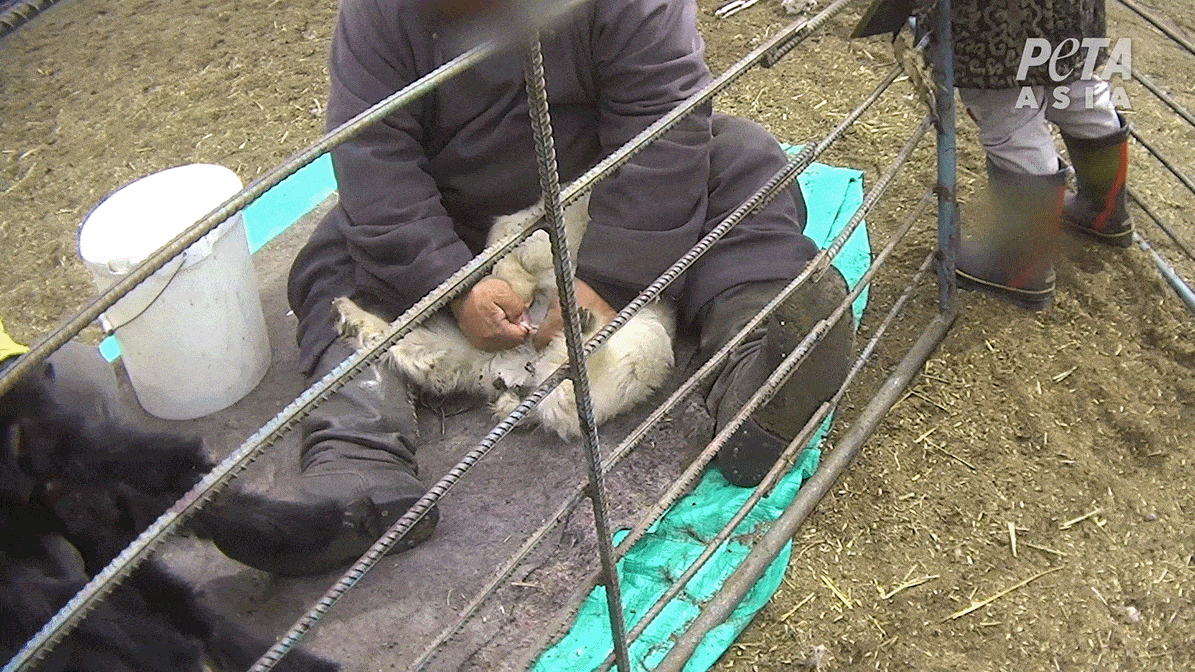
Kid goats cried out while they were castrated without pain relief, as a worker cut their scrotum with an unsterilized knife and yanked out their testicles with his bare hands. One goat sustained a bloody wound during combing, and an investigator found pieces of cashmere with skin on it. Another goat was seen with a bleeding penis. An investigator found a goat who appeared sick or injured while limping around in a pen. The animal was found dead the following day. And kids, like many others, died during the harsh Mongolian winter. A contact from a herding family also told PETA Asia investigators that smaller goats die from being trampled by larger ones as they rush for shelter at night, when it can get as cold as negative 22 degrees Fahrenheit.
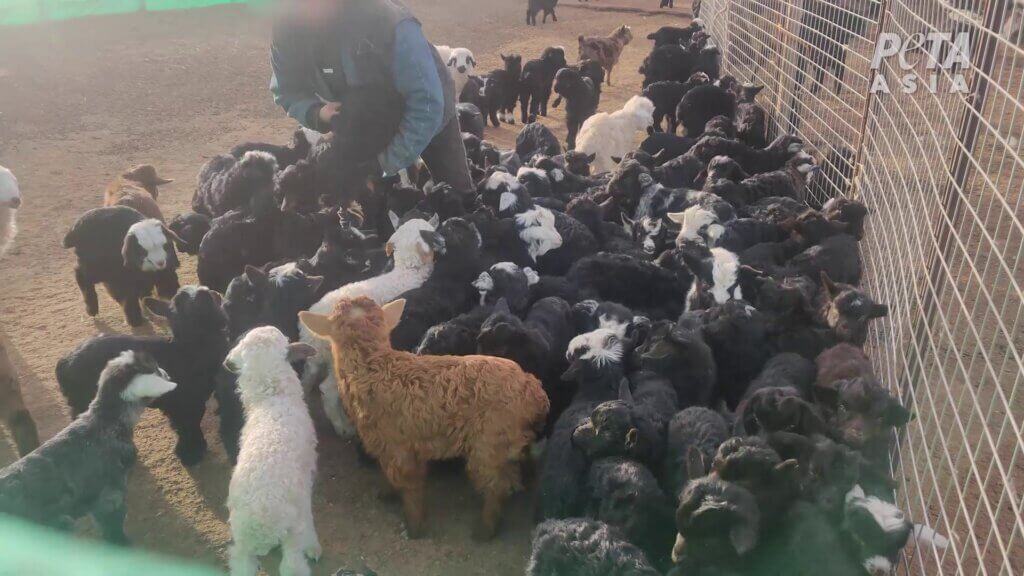
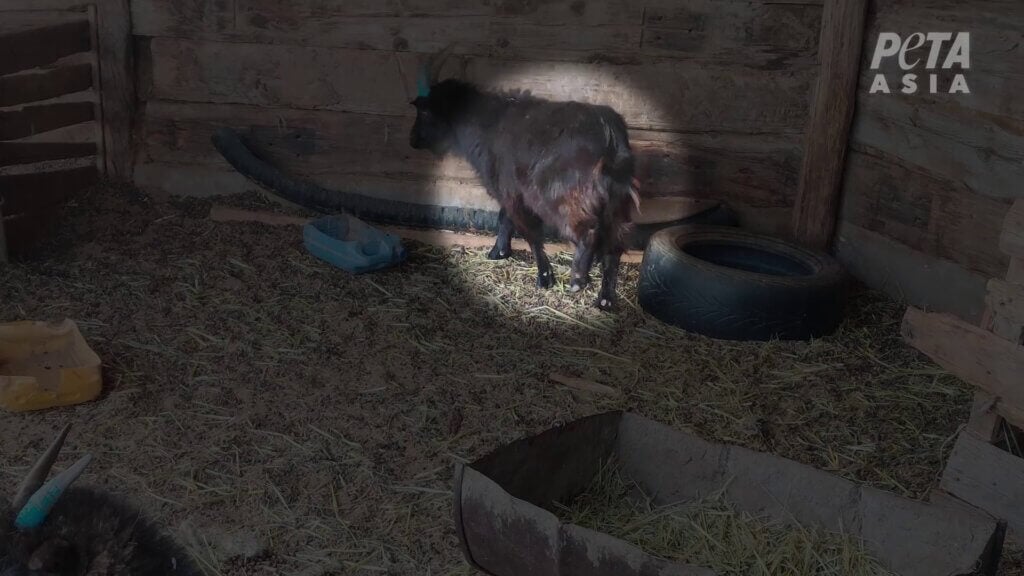
Workers Bash Goats’ Heads In With Hammers
What consumers may not realize is that the cashmere industry is a slaughter industry—workers kill goats when they’re no longer considered productive enough for this trade.
Investigators visited slaughterhouses, where they documented that workers drag cashmere goats to the kill floor, hit them over the head with a hammer, and cut their throats. Workers killed them in full sight of other goats. Afterward, some goats continued to move for over four agonizing minutes after their throats had been cut, before finally dying.
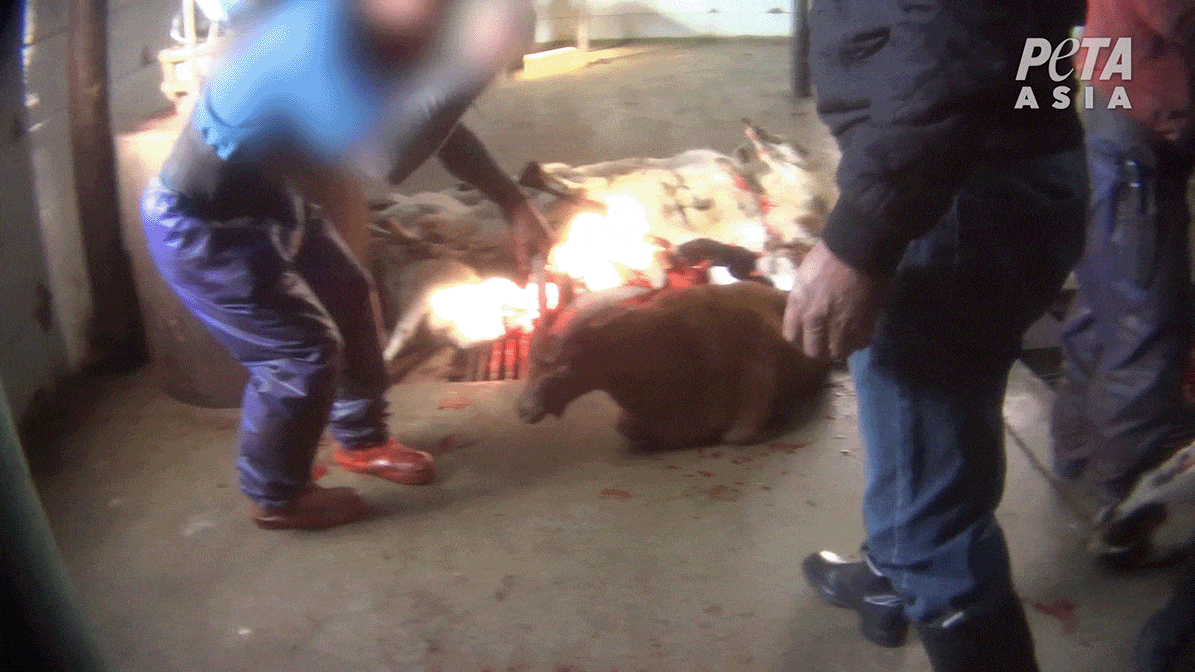
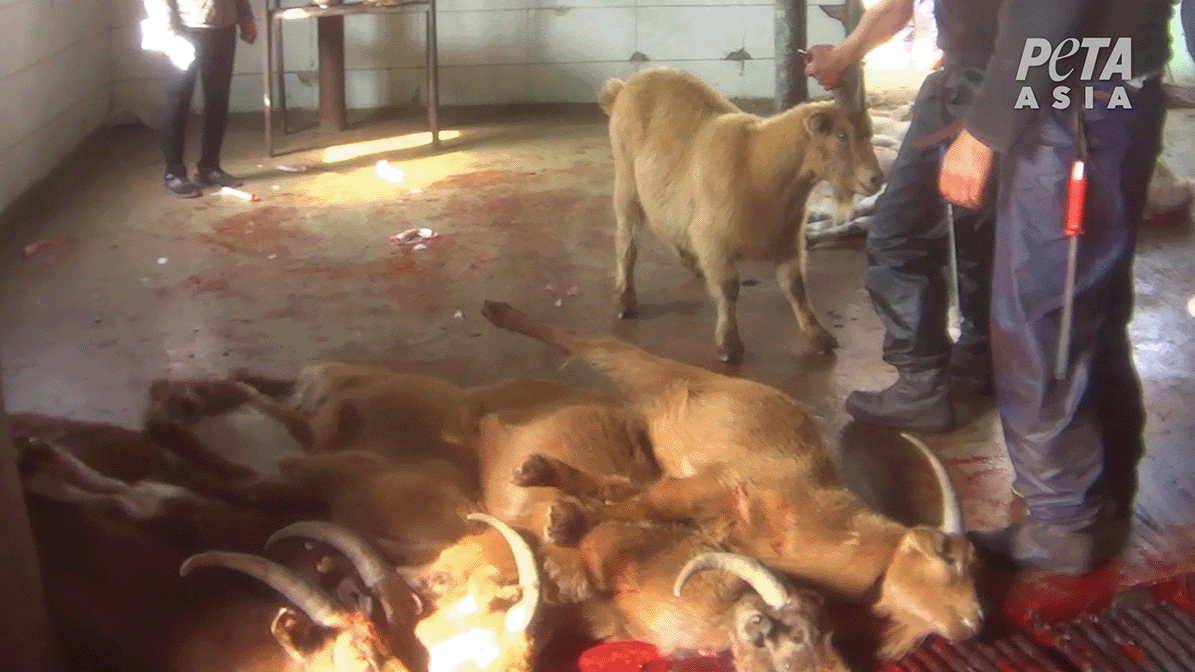
Sham ‘Standards’ Support Goats’ Suffering
In the wake of PETA Asia’s first investigation into the cashmere industry, clothing companies claimed that they would follow and support certain animal welfare “standards,” including by signing on to the Sustainable Fibre Alliance (SFA), an organization that certifies two of the cashmere operations seen in PETA Asia’s most recent footage. But the reality is that animal-skin industries will never be rid of exploitation and rampant cruelty, no matter what standards are adopted. Subscribing to “standards” instead of eliminating animal-derived materials fails animals and perpetuates their suffering.
For example, the SFA’s Code of Practice does the following:
- It recommends that combing be used to collect cashmere, despite the negative welfare outcomes associated with it.
- It doesn’t require pain relief for castration or injuries that occur during combing.
- It considers treating animals “humanely” prior to slaughter as a recommendation, not a requirement.
- It doesn’t require that goats be stunned prior to slaughter, and it allows for blunt force trauma to be used to kill goats.
Producers aren’t even required to meet all the guidelines set out in the codes of practice in order to be certified by the SFA.
Cashmere Production Devastates the Environment
Goats must consume more than 10% of their bodyweight in roughage every day, and they often eat plants down to the root. About 80% of the recent decline in vegetation on grassland is attributable to the explosion of goat and other ruminant animal populations in Mongolia, and the United Nations Development Programme found that 90% of Mongolia consists of dry, vulnerable land that’s under increasing threat of desertification.
“More goats mean more grazing; which, in turn, leads to degradation of the grasslands. The result is undernourished goats with coarser hairs, causing the supply of high-quality cashmere to shrink. To make up the lost revenue, herders breed bigger herds, setting off the cycle again.”
—Common Objective, global fashion monitor
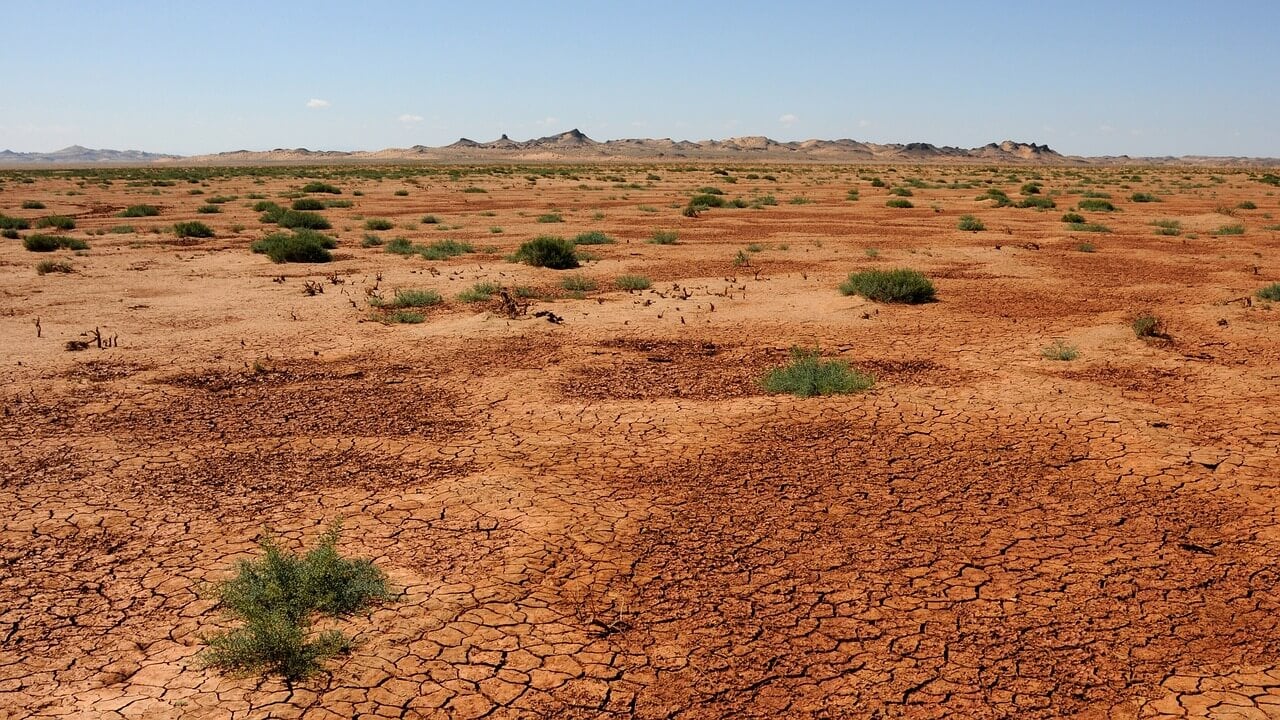
Urge Brands to Ditch Cashmere
Goats are clever animals who form strong bonds with each other, just as humans do. Like all animals, goats deserve respect and compassion. You have the power to help stop the abuse of these inquisitive, social animals.
Companies like to paint a pretty picture of what happens to animals for cashmere. But as PETA Asia’s footage of herders who supply major global retailers shows, the reality is far different:
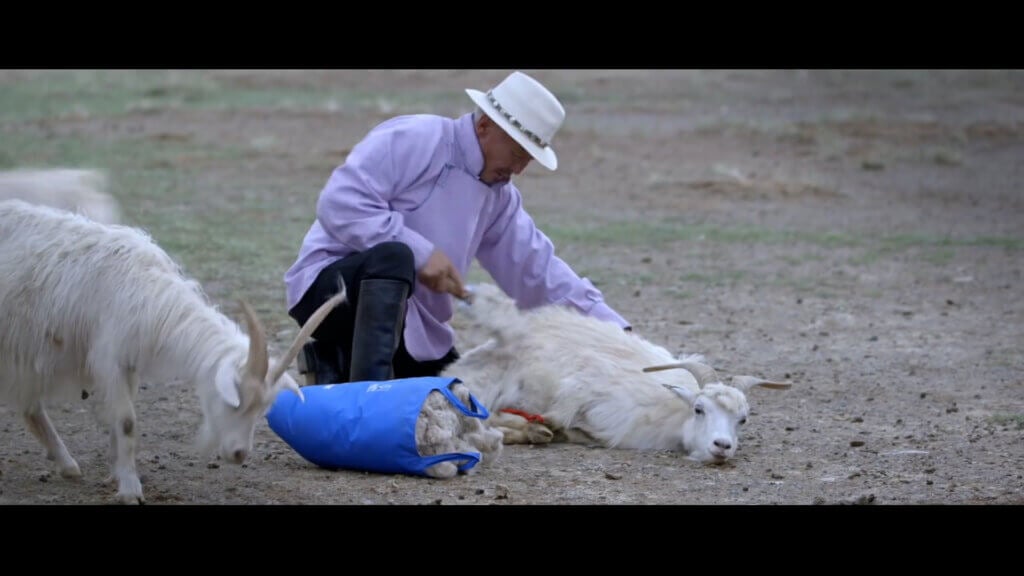
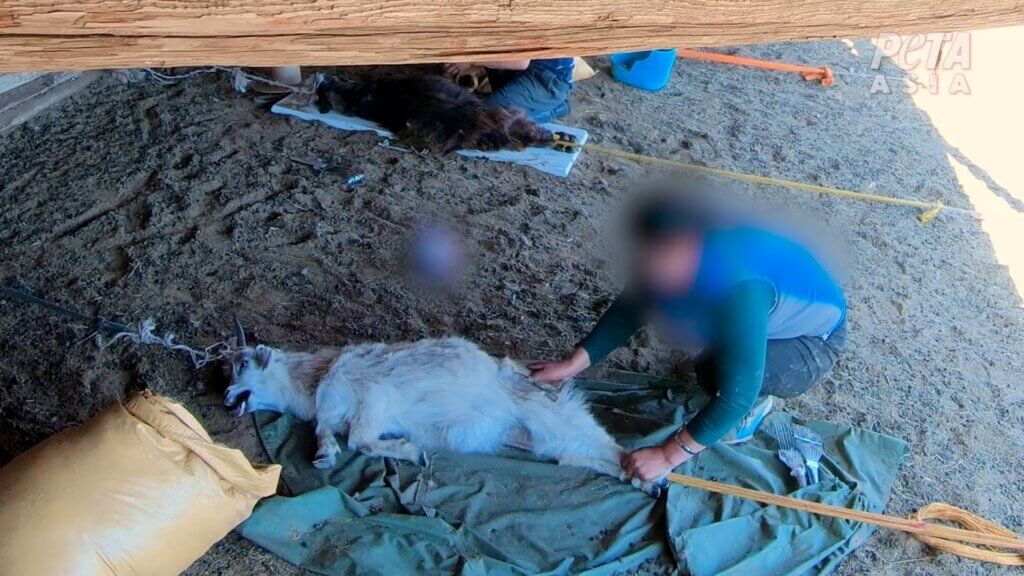
On the left is an image showing cashmere production on Naadam’s website. On the right is an image from PETA Asia’s investigation of an operation that provides cashmere to Naadam’s supplier.
Please send polite comments to these companies via the representatives below. Urge them to choose only vegan materials and to stop supporting the exploitation and slaughter of goats:
Pierre-Alexandre Bapst
Chief Sustainability Officer, Hermès
[email protected]
Pierangelo Fenzi
Head of Product Management, Falconeri
[email protected]
Alessandro Gallina
HR Manager, Lanificio Colombo
[email protected]
Alain Wertheimer
Global Executive Chair, Chanel
[email protected]
Delphine Arnault
Chair and CEO, Dior
[email protected]
Luigi Maramotti
Chair, Max Mara Group
[email protected]
Paolo Zannoni
Executive Vice Chair of the Board and Executive Director, Prada Group
[email protected]
Then, use the form below to contact other brands and urge them to do the same.